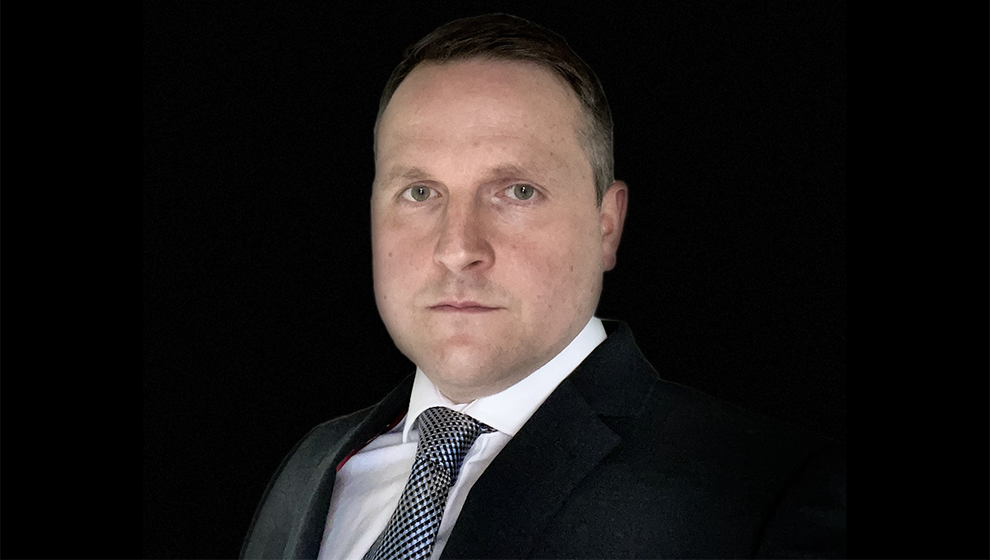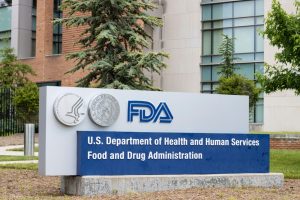In this feature, Express Solicitors partner Damian Bradley offers an in-depth look at both the process of pursuing a personal injury claim and the regulations that govern them. Drawing upon his professional experience, he discusses the process from law firm selection to proof of liability.
As a personal injury solicitor with over 20 years’ experience, how has the legal framework changed in this time – specifically in respect of the level of legal protection afforded to those who suffer injury?
The legal framework has changed dramatically over the last 20 years or so. In the late 1990s, legal aid was effectively withdrawn from personal injury. This was strange, as when one won a personal injury claim that was backed by legal aid, there was no actual cost to the legal aid fund because the tortfeasor’s insurers paid the legal costs and the benefits back in full together with some NHS costs, so the net effect for the state was a gain.
The state wanted to find a way to still recover the benefits paid out but to pass on the risk of funding personal injury claims that were not ultimately successful. This gave birth to the use of ‘No Win, No Fee’ agreements that passed the risk onto the claimant and the claimant’s lawyer. The conditional fee agreements with claimants were usually backed by After the Event (ATE) insurance and have become a common feature of litigation over the last couple of decades. The success fees charged by the lawyer contributed to the costs of losing cases and was a commercial basis to enable litigation services to be provided to the client with the additional recovery of ATE premiums.
ATE insurance was, and still is, crucial to protect claimants from the risk of paying their own disbursements in an unsuccessful case and the other side’s costs, for example, when failing to beat a Part 36 offer.
There was a decade or so whilst this system worked reasonably well, delivering representation and compensation to those injured through no fault of their own. However, there was then a whole series of changes including the introduction of Medco, a round robin system for selecting medical experts in low-value RTA claims which created its own challenges. The attempt to save costs was at the expense of freedom of choice and the claimant’s lawyer was no longer allowed to use their expertise to identify a suitably skilled independent expert.
The legal framework has changed dramatically over the last 20 years or so.
There has been an imposition of a host of different portals and fixed costs for all sorts of medium--to-low-value work; an increasing downward pressure on inter-party costs recovery. This has clearly had the effect of shifting more costs towards the claimant, which inevitably eats into their compensation for damages. The Jackson reforms shifted the burden of paying the success fees and the ATE premium from the tortfeasor’s insurer onto the claimant.
Granted, the case of Simmons v Castle [2012]EWCAC Civ 1288 decided that a claimant who had been deprived of the right to recover a success fee from a defendant under the Jackson reforms was able to have a 10% uplift on their award for general damages in order to soften the blow. However, the outcome for most claimants is that, compared to 20 years ago when they were recovering 100% of their award, presently they are ultimately recovering around 60% or 70%, with the balance contributing to unrecovered lawyer’s fees and paying for the ATE insurance premium where appropriate.
It has been disappointing to see that these reforms have been supported by primarily Conservative governments over the last decade or so, following immense pressure from the insurance industry to effect change. It is of note that, at the time, over 40 Conservative MPs declared financial interests in the insurance industry. However, the reforms were heralded as an effective way to reduce fraudulent claims and would lead to a reduction in insurance premium payments for all motorists.
There has been an imposition of a host of different portals and fixed costs for all sorts of medium--to-low-value work; an increasing downward pressure on inter-party costs recovery.
The real effect is that although they have considerably reduced the number of overall claims, the proportionate saving to the motorist – who in many cases are innocent people, not fraudsters – has not been reflected proportionately or at all. It is saddening that the predictions made by claimant personal injury solicitors were correct and the insurance industry has gone on to report hundreds of millions in profits for their shareholders.
What are the processes involved in seeking the services of a personal injury solicitor and what are the key steps involved when seeking justice and compensation for your clients?
Choosing the right personal injury solicitor to represent you in your claim is a daunting process for some. By way of guidance, the claimant should look for a firm that they are confident is large enough and well financed enough in order to fully litigate the claim. A claimant should also be given the opportunity to have their claim funded on a no win, no fee basis and they should not be asked to pay any fees upfront.
If a fee remission is not available for Court fees then you would expect the firm to be paying these disbursements. On the larger claims, the issue fee is £10,000 alone. Once comfortable that the firm is of sufficient standing and has specialist departments dealing with different categories of personal injury claims (which one can easily check by looking at their website), the claimant can then look at accreditation.
A specialist personal injury firm will be on personal injury panels and clinical negligence panels. The firm and its particular lawyers will be mentioned in the Legal 500 and Chambers and Partners. Feedback from clients of the firm is also available on sites such as Trustpilot; if they have a few thousand reviews then you are more likely to be able to trust the rating.
It is also important that the firm and lawyers within the firm are members of associations who campaign for an improvement to the claimant’s plight. I have been a member of the Association of Personal Injury Lawyers for many years now and have reached the level of Fellow, of which I am very proud. APIL does tremendous work in effecting change for the injured person. At Express Solicitors we are also a member of the Association of Consumer Support Organisations. ACSO is also very effective with its campaigning activity. To some extent this has ameliorated the worse effects of the Reforms. We contribute to the research programmes which provide the data for the Associations to meet with the MOJ and take part in certain working groups to ensure that the claimant is fairly represented.
By way of guidance, the claimant should look for a firm that they are confident is large enough and well financed enough in order to fully litigate the claim.
If the personal injury firm is an active member of these types of associations, the claimant can know that the firm is committed to securing maximum compensation for their clients, whilst providing the most cost-effective access to justice available.
What sources do you rely on when attempting to prove liability?
There are sources of evidence in an employers’ liability claim that one would look to rely on when attempting to prove liability and causation. The obvious one would be whether there is any CCTV footage of the accident and any available witnesses. In the absence of those we would then look to obtain the relevant documentation, such as an accident report or any complaints about previous defects or dangerous situations that had not been remedied before the accident. If the equipment was defective, then we would want to arrange for an expert engineer to examine the equipment and provide a report setting out their opinion on the same for the Court. We would need to see training documentation and any records of training and toolbox talks, things of that nature.
If it is a particularly serious injury, the Health and Safety Executive may well have been involved. In this case we would look to obtain the HSE report, including their investigation and their findings and any photographs that they have taken during the report. This can often be very helpful if the HSE do find that the defendant has been in breach of certain regulations, as this is useful in proving negligence.
If there is little or no evidence to support the claimant’s version of events, such as the claimant being on their own at the time of their misfortune, then we must be a little more creative and rely on technology to assist to try and establish as accurate a picture as possible.
We can look to obtain data from smart devices such as phones for GPS location, smart watches and even sat nav data from vehicles. We may analyse data captured within apps connected to smart devices in relation to heart monitors to establish changes in patterns at certain times of the event. We would also look at text messages, WhatsApp and other social media that has been posted to see if that can assist on defining location or what has happened in the time leading up to the accident or following the same. If any phone calls have been made then we can get details of the same.
If there is little or no evidence to support the claimant’s version of events, such as the claimant being on their own at the time of their misfortune, then we must be a little more creative and rely on technology to assist to try and establish as accurate a picture as possible.
Naturally, what is reported to the Ambulance Service (if they attended the scene) is good evidence, as is whatever is subsequently recorded in any hospital notes. Google Earth and Street View can sometimes be of assistance and even the defendant’s own website and social media can also help if you need to establish the position of a certain piece of equipment or the nature of a work location that may have changed since the time of the accident. Ring doorbells and domestic security cameras can also provide some assistance on occasion.
If all else fails, then you can simply plead that the accident speaks for itself and leave it to a judge to make the decision based on the veracity of the claimant’s witness evidence.
Some injuries can be life-changing for your clients. How do you approach these cases? What additional qualities, other than knowledge of the law, do you need to support your clients through the process?
Approaching a life-changing injury for a client is quite different from an injury where the claimant is expected to make a good recovery in a fairly short period of time with no long-lasting consequences.
In a catastrophic injury, the additional qualities that are needed (other than knowledge of the law) are those of being able to empathise not just with the claimant but the family as a whole and understand what a traumatic experience it is for everybody involved.
The lawyer should go and visit the client and their family at the earliest opportunity, ideally with the barrister who is going to be instructed on the case, to form an early rapport with the client and their family and to build the trust and confidence that their legal team are going to secure the best possible outcome for their loved one.
The lawyer should go and visit the client and their family at the earliest opportunity,
The ability to arrange rehabilitation is key, as the claimant will normally be retained within the NHS for a limited time and the provision of treatment and services will be slowly withdrawn. The worst-case scenario is that the state support is pared back to a level where the claimant and their family are no longer adequately supported and instead have to rely on the help of family and friends and look to pay for private treatment and care.
Often what can happen is that one of the family members who was working at the time of the accident will become the primary carer for the claimant and give up their job in order to look after them. If this is a spouse, then this can be severely detrimental in terms of their marital relationship with the claimant as they transform from being life partners to being carer and patient. It is vital to bring in external support in order to service the majority of the care needs and avoid this scenario.
One of the main ways to address this is by way of rehabilitation. Defendant insurers, particularly on catastrophic claims, are keen to engage in rehabilitation. At the outset of the claim it is normally all that is available to the claimant, so they will agree to accept the offer and arrange for some treatment and other services to be provided. Ideally, a substantial interim payment should be obtained at an early stage so that the claimant can arrange for their own rehabilitation and pay for their own private care needs from this sum of money.
It is important that if a case manager is required – which they normally are on catastrophic injury claims – that the claimant and their family have the opportunity to meet with the case manager to see whether they feel that they would get on well together, as they have to work closely. They should also meet their team, such as the occupational therapist, speech and language therapist and physiotherapist, to name but a few.
There may also be a need to instruct accommodation experts and architects for purpose-built homes or adaptations for the claimant, with a single level of accommodation employing the latest technology to provide some independence for the injured client as far as is possible. Specially designed transport may also need to be considered, especially to accommodate a wheelchair user, and have adapted controls. These are just a few concerns relating to the treatment requirements, aids and equipment and adaptations.
[ymal]
If we look at the financial side, it is essential that the claimant is provided with the best independent financial advice along the journey of the claim, from looking at the entitlement to benefits to considering personal injury trusts, Periodical Payment Orders and investment vehicles to ensure that, if a PPO is not made, the sum of damages that is awarded or achieved at settlement is looked after in the right way to ensure that the claimant has enough to provide for their family and themselves for the remainder of their life. Even settlements over £1 million can soon be exhausted without the right level of investment choices when the claimant requires round-the-clock private care.
If, in a catastrophic case, the claimant does not have capacity, then it is probable that a deputy will have to be appointed and the Court of Protection involved in order to protect the claimant’s interests. The lawyer who deals with catastrophic claims must be skilled in all these areas and have defined pathways established in order to provide access to those services if they are not directly part of the offering of a personal injury firm.
Finally, the personal injury firm needs to have access to the very best medical experts in their particular field. These can be the difference between a £1 million and a £10 million claim based on the strength of the medical expert team that is involved. Often as these experts are at the top of their profession they will require payment for their services at the highest level, sometimes in advance and the Claimant and their family need to know that the firm of Solicitors that they use are prepared to fund the suite of expert reports which can often be many tens of thousands of pounds, throughout the duration of the claim.
Damian Bradley, Partner
Resolution House, 311 – 319 Palatine Road, Northenden, Manchester, M22 4HH, UK
Tel: +44 01619 044660
E: damian.bradley@expresssolicitors.co.uk
Damian Bradley is a partner and Head of Legal Operations at Express Solicitors who specialises in employers’ liability claims. With over 20 years of experience as a qualified solicitor, Damian deals with claims arising from all types of serious injury following an accident at work, including brain injuries, spinal injuries, and musculoskeletal injuries as well as claims involving pain syndromes. He is also a Fellow of the Association of Personal Injury Lawyers, having served as the group’s North West Co-ordinator for six years, and has been recognised by the Legal 500 as “hugely experienced”.
Express Solicitors is one of the largest specialist personal injury law firms in the UK, ranking among the UK’s Top 200 firms in addition to many other accolades. With a team of more than 200 lawyers, Express Solicitors handles a range of claims involving medical negligence, work accidents, road traffic accidents and public liability, among other areas.





















